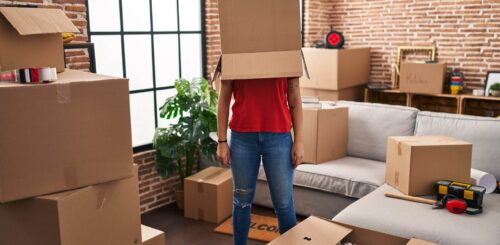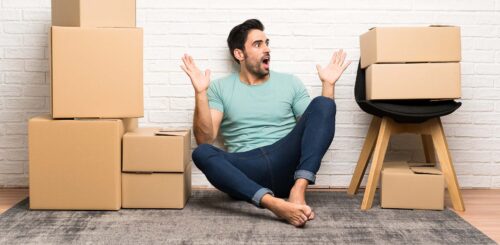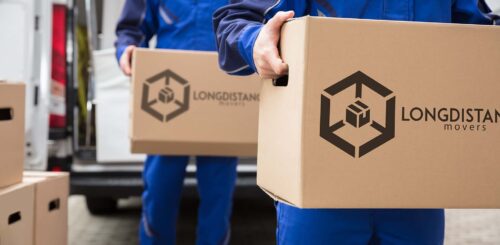How to pack kitchen items for moving is among the first questions that will be on your mind when you decide to relocate, due to the importance these things have in our everyday lives. It is a place that contains many fragile objects that need special handling. Using the right materials and calling a long-distance moving company to assist you are only two of the many possible options. Read through our tips and tricks on how to prepare delicate items for transport and find out how to protect your belongings in the right way.
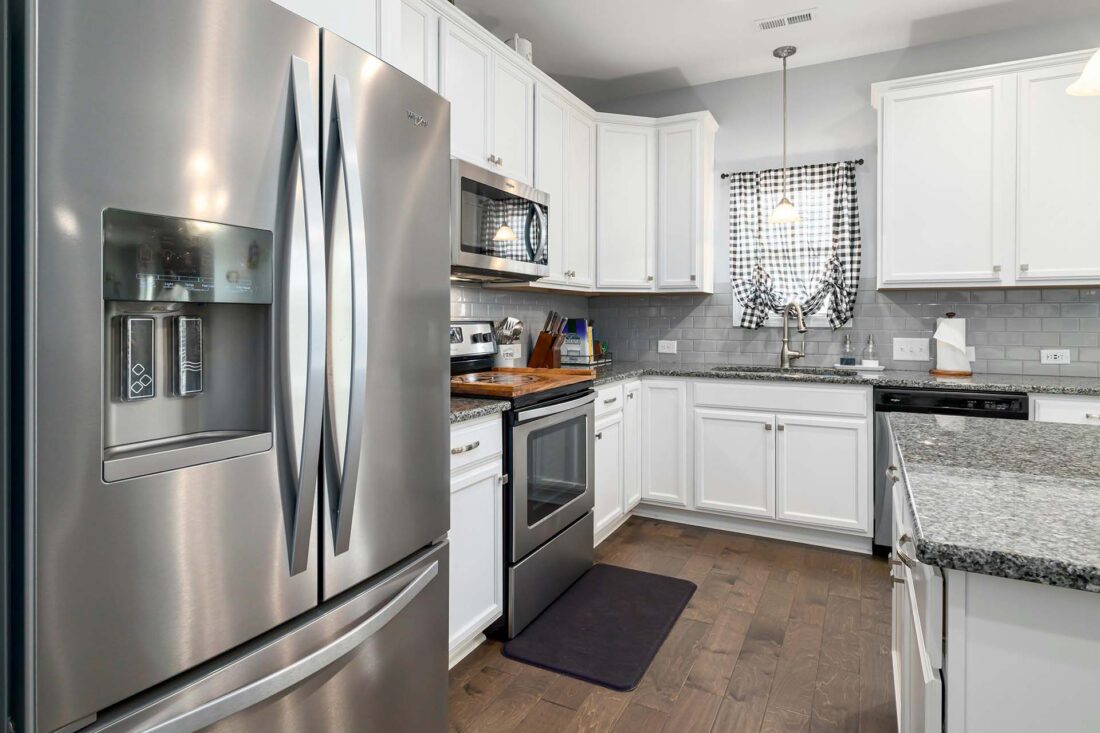

Use up All the Food
A week before you move, try to reduce the amount of food you buy and keep in your fridge. This will be beneficial for you when the time comes to clean up the kitchen. Go through your perishable foods and use them to make tasty meals. If you can’t find a recipe on your own, look through websites like Supercook and All Recipes – they offer excellent cooking choices.
Before Asking Yourself ‘How to Pack My Kitchen Items for Moving’ – Sort Out Your Food
Humans are prone to hoarding objects. When you start sorting your foods, make sure to clean out your pantry and cabinets. Throw away those things that are past the expiration date, and try to use those that are not. If you have too much food, you can always donate it to a local food bank.
How to Pack Kitchen Items for Moving – Pick the Right Packing Supplies
One of the essential parts of preparing your possessions for transport is picking up the right supplies. If you are hiring a long-distance moving company that provides packing services along with cross-country moving services, its packers will bring the best-sized boxes and other supplies with them. But if you are doing it on your own, you have to think about the proper materials.
Gather boxes, paper, bubbles, tape – the more material you gather, the better. Make sure the crates are in different sizes so that you can fit all of your belongings, large and small. You would not want to run out of it in the middle of the process.
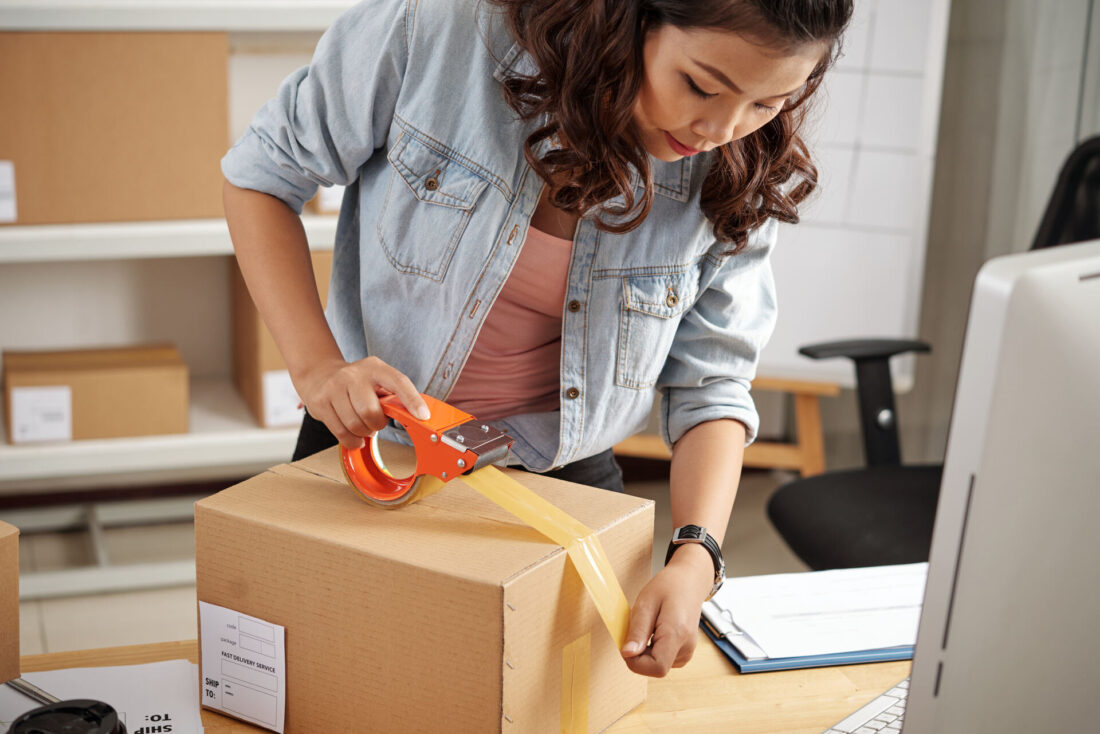

First Steps in Our ‘How to Pack Kitchen Stuff for Moving’ Guide – Tips for Sorting Items
When relocating, give yourself enough time to pack and make a packing schedule or a comprehensive relocation to-do list. Start a few weeks in advance by making a household inventory list and putting away pieces that are not used frequently or not used at all at the moment.
Before putting your kitchen possessions in a box, try to sort them into essential and non-essential categories. The former category of stuff will be packed the last, while the latter can be put in a box as soon as you decide to move out. This will speed up the moving process and still leave you enough elements to survive the last few days in your old home.
Essentials you should pack the last are:
- Few plates, cups, and cutlery
- Foods that you will use
- Saucepan
- One sharp knife
- Cleaning liquids like soap
- Coffee maker
- A few towels
Non-Essential Belongings
When you decide which possessions you will be using in the last week at your old house, it is time to handle non-essential belongings.
Start with sorting them out. When you get those out of the way, putting away leftover essentials will be fast and easy. If you don’t have enough room for all the things you don’t have a real reason to move right away, there is always the possibility of having cross-country movers place them in a storage unit until you move into your new place.
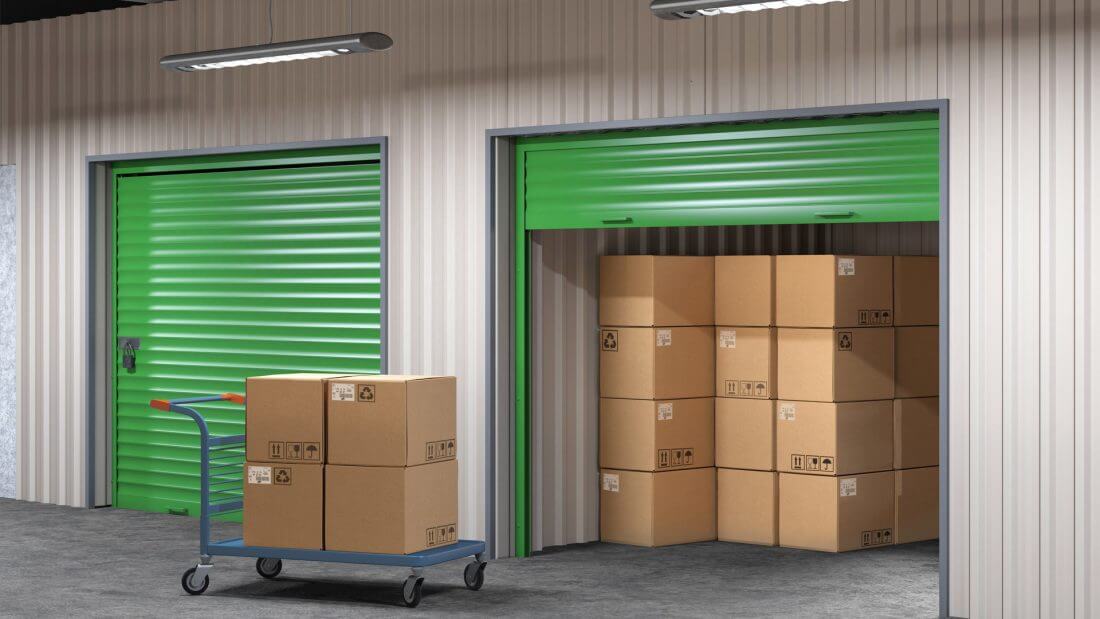

Tricks for Packing Kitchen Items
If you are relocating on your own, make sure to use proper packing strategies and techniques. Be careful not to overfill the boxes, then tape and label them correctly.
But when it comes to packing kitchen items themselves, few tricks will help you keep them intact:
- If you put your plates vertically, you will prevent them from breaking when relocating,
- Tape lids of pans and cookware,
- When you want to pack liquids for the move, remove caps and place plastic wrap over the neck of the bottle. This will prevent liquids from spilling.
Preparing Fragile Possessions for Moving
Packing fragile objects like glasses, your dishes, and fine china can be tiresome. But it is essential to pack them correctly if you want to avoid fractures and breaks during the move. Use as much stuffing material, like paper and bubble wrap, as possible. It will prevent elements from bumping into one another during the move. Don’t forget to wrap them and correctly label the box containing them.
When handling silverware, you should first sort them by size, then tightly bind them into a bundle. Use duct tape to tight the package in one place. The same goes for knives. Make sure to wrap them in the paper as well as it will prevent the blades from cutting through the wrap.
How to Pack Plastic Kitchen Items for Moving
Make sure the plastic kitchen items are clean and dry before packing them. Sort the items into categories such as plates, cups, bowls, utensils, etc. This will make it easier to pack them. Wrap each item in bubble wrap to protect it from scratches and damage. You can also use packing paper or newspaper if you don’t have bubble wrap. Place a layer of packing peanuts at the bottom of the box to cushion the items. You can also use crumpled newspaper instead of packing peanuts. Fill any gaps in the box with more packing peanuts or crumpled newspaper. This will prevent the items from shifting during transport.
Tips for Packing Larger Belongings – Pots and Pans
Pots and pans are relatively easy to pack. They are not as breakable as other elements. So wrap them in paper and then stack them in bigger boxes. There is no single best way to pack for moving – all you can do is protect your objects the best way possible by using available and appropriate supplies. If you are hiring an excellent long-distance moving company, its staff will take care of your belongings with the utmost attention and professionalism.
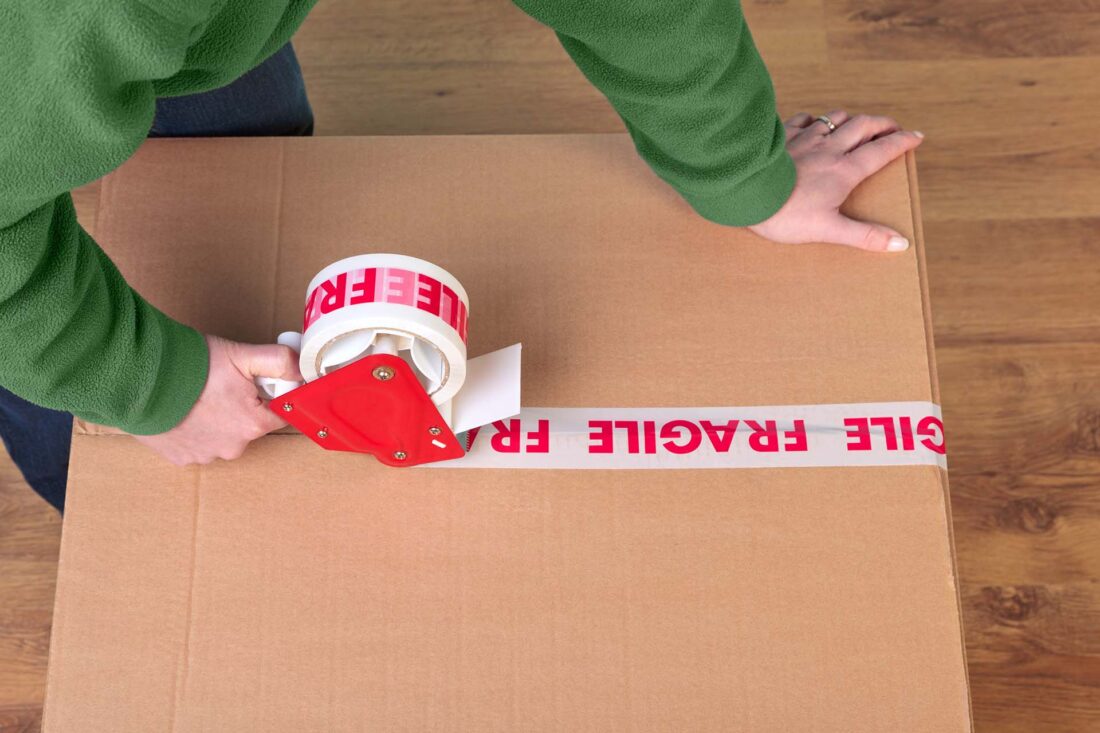

Preparing Appliances for the Move
We all have objects like toasters, blenders, coffee makers, and microwaves. Placing them in a box will be easy if you can find their original packaging. But if you don’t know where those are, use strong cardboard crates of the appropriate size. For an additional level of protection, wrap your belongings or fill boxes with paper, or any other cushioning material.
Preparing Small and Large Appliances for Transport
Smaller appliances are easily lifted and placed in a box, especially if they have straight edges and fit in crates perfectly. Emptying your kitchen would be easy if those were the only items there. But do you have a new refrigerator, freezer, or dishwasher that you want to take with you? You should know that preparing such large and heavy objects for an efficient move might take some time. It would be a smart idea to find the instruction manuals for those devices since it will help with assembling and disassembling. And when loading them into a truck, keep them in an upright position somewhere in the back of the vehicle to avoid any damage.
If you decide to do it by yourself, obtain the right equipment and workforce. Handling these objects by yourself is more trouble than it is worth, so consider contacting a reliable long-distance moving company and have long-distance movers do everything for you.
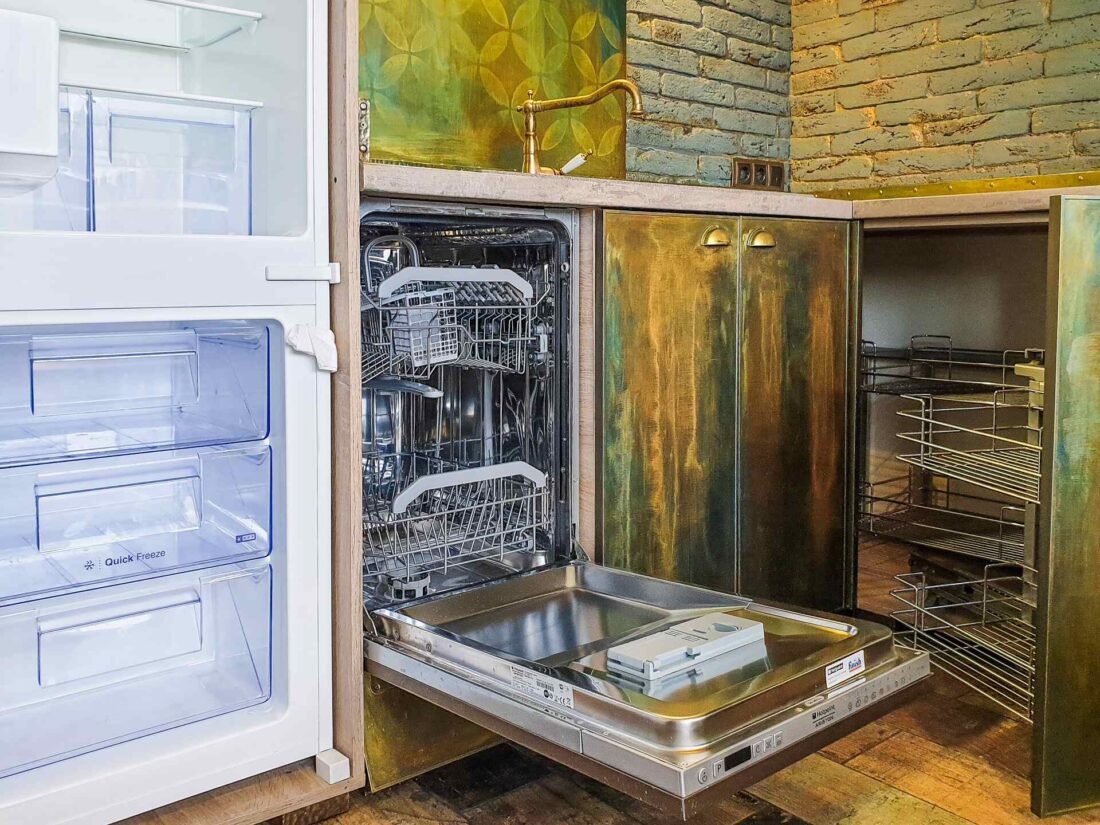

Final Steps in Packing Your Kitchen
You finally put everything away. Labeled all the crates and emptied every cupboard. All that is left are essentials that you will put away on the day of your move. Go through the room one more time, check every drawer, and enclosed space. Make sure you haven’t missed something, you would not want to unpack in a new home realizing you forgot a favorite mug or a frying pan you like to use.
Tackling relocation on your own can be tricky, so before you get into that adventure, think about hiring a good long-distance moving company. Have in mind that they can assist you with many tasks like proper bagging, heavy lifting, and loading of your belongings. If you are worried about your relocation budget and the quality of service, make sure to contact a few cross-country moving companies and pick the one that offers exceptional moving services and has outstanding reviews.
FAQ
What Kitchen Items Should I Pack First When Moving?
You should start by packing the kitchen items that you don’t use very often, such as seasonal items or items that are used for special occasions. This will help you declutter your kitchen and make it easier to pack the items you use more frequently. Don’t forget to use up all the food you have in the kitchen.
How Do I Pack Fragile Kitchen Items for Moving?
Fragile kitchen items such as glassware or ceramic plates should be wrapped in bubble wrap or packing paper to protect them during transport. You can also use dish towels or cloth napkins to wrap these items for extra protection.
What Packing Materials Should I Use to Pack Kitchen Items for Moving?
Choose boxes that are sturdy enough to hold your kitchen items. You can buy boxes specifically designed for moving or use boxes you already have on hand. Packing paper is a versatile packing material that can be used to wrap fragile kitchen items. It provides cushioning and prevents items from rubbing against each other. Bubble wrap is another popular packing material that provides excellent cushioning for fragile kitchen items. It is lightweight and easy to use.
How Do I Pack Sharp Kitchen Items Like Knives?
Sharp kitchen items such as knives should be wrapped in bubble wrap or placed in protective sleeves to prevent them from cutting through other items or injuring someone during transport. You can also use a knife block or holder to keep them organized and secure.
Should I Pack Food Items When Moving My Kitchen?
As we’ve mentioned previously, it is generally not recommended to pack perishable food items when moving. Non-perishable food items such as canned goods can be packed, but you should make sure they are properly sealed and won’t leak during transport.
How Do I Pack Appliances Like a Coffee Maker or Blender for Moving?
First, make sure to empty any liquids from the appliance. Then, wrap the appliance in bubble wrap or packing paper to protect it during transport. You can also use the original packaging if you still have it. Make sure to pack the appliance securely in a sturdy box, and fill any empty spaces with packing peanuts or crumpled packing paper to prevent shifting during transport. Label the box with the contents and the room it belongs in for easy unpacking.
Can I Stack Dishes and Bowls When Packing Them for Moving?
Yes, you can stack dishes and bowls when packing them for moving, but make sure to place a layer of packing paper or bubble wrap between each item to prevent them from rubbing against each other and getting scratched. We recommend throwing a packing party so your family members and friends help you with this task.
How Do I Pack Pots and Pans for Moving?
Pots and pans can be stacked inside each other to save space, but make sure to place a layer of packing paper or bubble wrap between each item to prevent scratches. You can also use dish towels or potholders to wrap the handles for extra protection.
What’s the Best Way to Label My Packed Kitchen Boxes for Moving?
The best way to label your packed kitchen boxes for moving is to write a brief description of the contents and the room they belong in on the box. This will make it easier to unpack and organize your items when you reach your destination. Be sure to use a marker that writes clearly and is easy to read, and label each box on at least two sides so that it can be identified from different angles. You can even create labels for boxes.
How Many Boxes Will I Need to Pack My Kitchen Items for Moving?
The number of boxes you will need to pack efficiently when relocating will depend on the size of your kitchen and the number of items you have. It’s a good idea to estimate the number of boxes you will need based on the size of your kitchen and the types of items you have. As a general rule of thumb, you may need anywhere from 5 to 15 boxes or more to pack your kitchen items for moving safely across the country.
